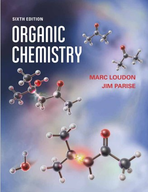An optically active compound A, C6H10O2, when dissolved in NaOH solution, consumed one
Chapter 21, Problem 21.53(choose chapter or problem)
An optically active compound A, C6H10O2, when dissolved in NaOH solution, consumed one equivalent of base. On acidification, compound A was slowly regenerated. Treatment of A with LiAlH4 in ether followed by protonolysis gave an optically inactive compound B that reacted with acetic anhydride to give an acetate diester derivative C. Compound B was oxidized by aqueous chromic acid to b-methylglutaric acid (3-methylpentanedioic acid). Identify compounds A, B, and C, and explain your reasoning. (The absolute stereochemical configurations of chiral substances cannot be determined from the data.)
Unfortunately, we don't have that question answered yet. But you can get it answered in just 5 hours by Logging in or Becoming a subscriber.
Becoming a subscriber
Or look for another answer
